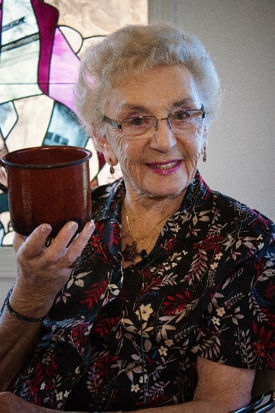Jones: Holocaust survivor finds forgiveness

Courtesy of Iowa State Events website
Celina Karp Biniaz
April 2, 2019
Forgiveness seems to be a difficult thing to grasp for both victims and wrongdoers. What seems fair is justice, but sometimes that unreasonable act of forgiveness is practiced. Whether it’s being lied to or being tortured in a mass genocide against your ethnic group, forgiveness might be the most powerful gesture in people’s lives.
I had these thoughts run through my head Sunday as I sat and listened to the lecture “Second Chance” by Celina Biniaz, a Holocaust survivor.
Biniaz was an 8-year-old Jew when she was first captured in Poland. Her family was moved to a camp in Czechoslovakia, but soon was added to the famous “Schindler’s List.” Oskar Schindler was an ex-Nazi who started to save Jews through jobs at his factory. He and his wife, Emilie, created a list of 1,100 Jews that qualified to come work at his factory. The Biniaz family was on that list. Even though she was put on this list and claimed that Mr. Schindler saved her life, the experience was all but pleasant. Before being transported to Schindler’s factory, Biniaz and her mother spent five and a half weeks in Auschwitz. When asked about her time in Auschwitz, her only response was, “traumatic.” The silence of the Great Hall and the attentiveness of the listeners made this one-word response ring severity.
Biniaz explained that on her last day in Auschwitz, she and her mother were getting ready to be inaugurated into Auschwitz officially because Schindler had not come for them yet. Just before receiving Auschwitz tattoos, Schindler finally arrived and explained to the Comandante that Biniaz and her mother were on his list along with 300 other women. Once Biniaz and her mother arrived at Schindler’s factory, they were still expected to work and had very low rations.
“We were starving and malnourished” Biniaz said when describing Schindler’s factory. “We lived above the factory in barracks, which was good because the heat from the factory rose. We were given a slice of bread and a bowl of soup each day.”
If this was her experience with Schindler, who was trying to help the Jews, I cannot imagine her experience in the camp where they were trying to torture the Jews.
Fast forward a bit to the family’s liberation in 1945. When they were set free from the factory, they were only given two bolts of cloth and five pairs of scissors to barter with in order to travel home. Her way back to Poland consisted of catching up on education, after missing years in the camps, and sneaking across borders. Biniaz eventually, after even more grievances, fled Europe and grew up in Iowa for the rest of her life.
So how can someone find forgiveness after experiencing such suffering and pain? When Biniaz was liberated she explained her hate toward the Nazis. She mentioned a particular nun, Mater Leontine, who had a tremendous influence on her personal growth in the years after her liberation. Biniaz explained her emotions as a “fight against hate” and said she was in combat with bitterness. I cannot imagine what it is like to have to let go and forgive a person of that measure of wrongdoing.
Here’s the point: Biniaz has very powerfully portrayed the act of forgiveness for what historians consider to be one the most horrific phenomenons of world history. There are a lot of horrific things in this world and stories maybe even more traumatic and unfair than Biniaz’s, but my gained perspective and wisdom from her story is that there should be no reason not to forgive in this world.






